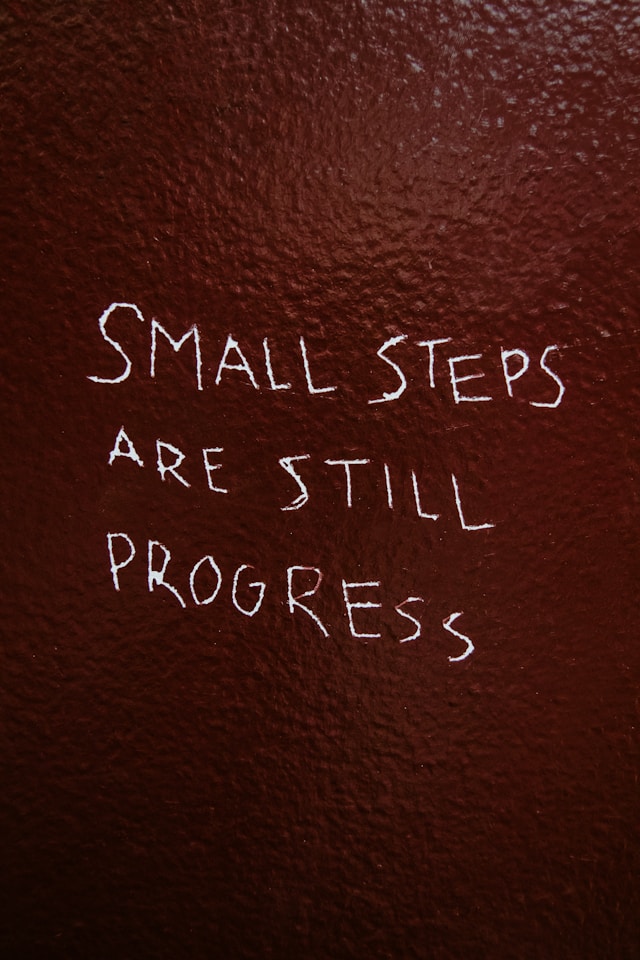Developing a growth mindset is one of the most valuable habits you can cultivate. It shapes the way you approach challenges, setbacks and opportunities for learning. Rather than focusing on eliminating bad habits, consider the benefits of actively fostering a mindset that encourages continuous self-improvement.
Confidence in your abilities to go after your goals can sometimes be difficult to find or keep.
It can sometimes take time to discover the confidence you have inside you. This can be especially true if you are trying something new.
I have a program that can help you to discover what is holding you back from achieving your goals as well as help you set an attainable goal related to where you are in your life and where you are trying to be.
This program also works with you to build up your confidence in being able to reach your goal.
You can find out more about this program at Confidology, a funny name but a serious program.
You can contact me to talk about this or any other aspect of confidence and success at michael@coachmichaelw.com
Visit the site and read through the program description.
If you are not ready to commit to a full program, I have a self-paced course on Udemy that may be of interest. You can find out about the course and register at Confidence and Motivation Development and Maintenance
A growth mindset — the belief that abilities and intelligence can be developed through effort and learning — transforms how you experience life. It fosters resilience, curiosity and the ability to embrace challenges rather than fear them. In this article, we’ll explore why a growth mindset is crucial, how it benefits various aspects of your life and practical ways to develop it.
The Power of a Growth Mindset
Your mindset influences how you perceive success, failure and personal development. People with a fixed mindset believe their abilities are static and unchangeable, leading them to avoid challenges and fear failure. In contrast, those with a growth mindset understand that improvement comes through effort, persistence and learning from mistakes.
The difference is profound: individuals with a growth mindset see failures as learning opportunities rather than personal shortcomings. They embrace new experiences, welcome feedback and constantly seek ways to improve.
Key Benefits of Developing a Growth Mindset
1. Lifelong Learning Keeps You Sharp
Adopting a growth mindset means valuing continuous learning. Learning isn’t just about acquiring new knowledge — it rewires your brain, helping you develop new ways of thinking and problem-solving.
- People who continue learning throughout their lives remain mentally agile.
- Studies show that engaging in new learning experiences can help delay cognitive decline and reduce the risk of dementia.
- Learning keeps you connected to new ideas, perspectives and innovations, making life more interesting and fulfilling.
When you make lifelong learning a habit, you’re not just gaining skills — you’re keeping your brain healthy and adaptable.
2. Perseverance and Resilience Grow Stronger
A growth mindset teaches you that obstacles aren’t dead ends; they’re learning experiences. When you approach problems with a willingness to adapt and persist, you develop resilience.
- You begin to see multiple solutions to problems instead of feeling stuck.
- You become more confident in handling setbacks.
- You stop fearing failure and instead see it as part of the learning process.
When you embrace perseverance, challenges become stepping stones to success rather than roadblocks.
3. Challenges Become Opportunities
People with a fixed mindset avoid challenges because they fear failure. Those with a growth mindset see challenges as opportunities to grow.
- Struggling through something new forces you to stretch your abilities.
- Overcoming difficulties builds confidence in your ability to succeed.
- Viewing challenges as learning experiences reduces anxiety and increases motivation.
By reframing difficulties as growth opportunities, you build confidence and develop the skills needed to tackle even greater challenges.
4. Failure Becomes a Teacher, Not an Enemy
One of the biggest transformations that come with a growth mindset is the ability to embrace failure rather than fear it.
- Instead of seeing failure as proof of inadequacy, you recognize it as feedback.
- Every mistake provides insight into what doesn’t work, guiding you toward better strategies.
- The most successful people have failed many times but used those failures as stepping stones to improvement.
Shifting your perspective on failure allows you to take risks, try new things and ultimately achieve more than you thought possible.
5. Constructive Criticism Fuels Improvement
Feedback can be hard to hear, but with a growth mindset, it becomes a tool for progress. When you stop seeing criticism as a personal attack and start viewing it as valuable insight, you unlock new levels of self-improvement.
- Constructive criticism helps you identify areas for growth.
- Learning from feedback makes you more adaptable and open-minded.
- Accepting criticism with a growth mindset builds confidence instead of insecurity.
Rather than resisting feedback, welcome it as an opportunity to grow into the best version of yourself.
How to Develop a Growth Mindset
Building a growth mindset isn’t an overnight transformation — it’s a practice. Here’s how you can start:
1. Reframe Challenges as Learning Experiences
Instead of seeing challenges as threats, shift your perspective to view them as opportunities to grow. Ask yourself:
- What can I learn from this situation?
- How can I improve next time?
- What new skills can I develop through this challenge?
2. Replace Negative Self-Talk with Growth-Focused Thinking
Your inner dialogue shapes your mindset. Instead of saying, “I’m not good at this,” shift to “I’m still learning and improving.”
- Replace “I failed” with “I learned something new.”
- Swap “This is too hard” with “This will help me grow.”
3. Embrace Effort and Persistence
Recognize that progress takes time. Even when something feels difficult, remind yourself that consistent effort leads to growth.
- Break tasks into smaller steps.
- Celebrate progress, not just results.
- Keep pushing forward, even when improvement feels slow.
4. Seek Feedback and Apply It
Instead of avoiding feedback, actively seek it out. Ask mentors, colleagues, and friends for insights on how you can improve.
- Apply constructive criticism rather than taking it personally.
- Use feedback as a tool for refining your skills.
5. Surround Yourself with Growth-Minded People
The people around you influence your mindset. Surround yourself with those who encourage learning, challenge you to improve, and support your growth.
- Engage in discussions that spark new ideas.
- Learn from people who embrace challenges and innovation.
- Avoid negativity that reinforces a fixed mindset.
Final Thoughts
Developing a growth mindset transforms your life. It allows you to embrace challenges, persevere through setbacks and continuously improve. By shifting your perspective on learning, failure and effort, you unlock your full potential.
The journey to self-improvement never ends — but that’s the beauty of it. Each challenge you face is an opportunity to grow, and every failure brings a new lesson. Keep pushing yourself, stay curious and remember: growth is a lifelong adventure.
To talk about any aspect of success or working with a Life Coach to help you to achieve success, you can book a 30-minute call by clicking on the blue button below.
Don’t try to do all of this by yourself, ask and receive the guidance that can get you moving towards your own success.
Working together can help you overcome personal and professional barriers, ensuring you reach your highest potential.
Nothing happens until action is taken.
To your success.
Michael
P.S Don’t forget to visit Confidology to learn more about the program. If you are not ready to commit to a full program, I have a self-paced course on Udemy that may be of interest. You can find out about the course and register at Confidence and Motivation Development and Maintenance
P.P.S if you want to find out more about my programs just check out the site Confidence and Life Coaching
P.P.P.S. If you enjoy reading these articles on my blog, I have more books that have more of this type of information that you can find out more about at Books to Read. You can buy these ebooks at many on-line book stores. The links to the bookstores are at the link above.
Photo by Hayley Murray on Unsplash






